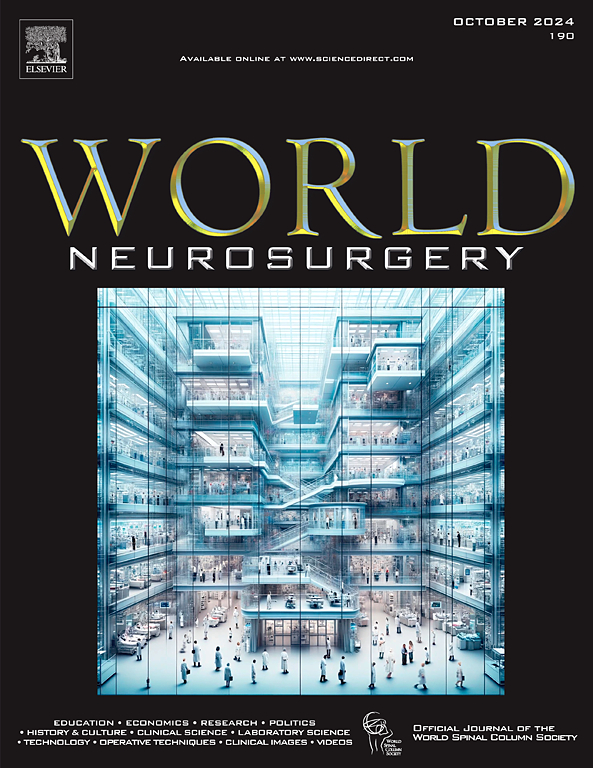脊髓损伤和脊髓损伤的治疗方案:基于共识的重症监护和外科治疗分层方案。
IF 1.9
4区 医学
Q3 CLINICAL NEUROLOGY
引用次数: 0
摘要
导言:脊髓创伤(STx),伴或不伴脊髓损伤(SCI),是一个重大的全球健康负担,特别是在低收入和中等收入国家(LMICs)。国际指南通常假定重症监护和手术管理的资源可用性,限制了其在资源有限的情况下的适用性。适应资源的方法可以改善这些情况下的管理。本研究旨在为STx和SCI的重症监护和手术管理制定资源分层方案,通过临床证据和基于专家的实践解决lmic特有的挑战。材料和方法:多学科德尔菲共识过程结合国际循证指南与专家意见。来自中低收入国家和高收入国家(HICs)的医疗保健提供者进行反复讨论和投票,确保了针对不同培训水平、资源可用性和医疗保健基础设施量身定制的上下文敏感且灵活的协议。结果:最终的方案涉及重症监护和手术管理的关键方面,包括复苏,心肺优化,成像,手术标准和时机。两个方案用于重症监护(术后恢复和普通ICU设置),三个方案用于外科管理,反映了资源水平:无成像的基本设施,有x射线的中级设施和有CT/MRI的高级设施。结论:所提出的方案可以通过为资源有限的环境提供适应性框架来弥补中低收入国家STx和SCI护理方面的差距。共识驱动的方法可以促进中低收入国家的协议化医疗服务,强调可行性和地方适应性。未来的努力应侧重于在临床实践中验证这些方案。本文章由计算机程序翻译,如有差异,请以英文原文为准。
BOOTStrap-SCI: Beyond One Option of Treatment for Spinal Trauma and Spinal Cord Injury: Consensus-Based Stratified Protocols for Intensive Care and Surgical Management
Objective
Spinal trauma (STx), with or without spinal cord injury (SCI), represents a significant global health burden, particularly in low- and middle-income countries (LMICs). International guidelines often assume the availability of resources for intensive care and surgical management, limiting their applicability in resource-constrained settings. A resource-adapted approach may improve management in these contexts. This study aimed to develop resource-tiered protocols for the intensive care and surgical management of STx and SCI, addressing LMIC-specific challenges with clinical evidence and expert-based practices.
Methods
A multidisciplinary Delphi consensus process combined international evidence-based guidelines with expert input. Iterative discussions and voting by healthcare providers from LMICs and high-income countries ensured context-sensitive and flexible protocols, tailored to varying levels of training, resource availability, and healthcare infrastructure.
Results
The resulting protocols address key aspects of intensive care and surgical management, including resuscitation, cardiopulmonary optimization, imaging, and surgical criteria and timing. Two protocols were developed for intensive care (postoperative recovery and general ICU setting) and 3 for surgical management, reflecting resource levels: basic facilities without imaging, intermediate facilities with X-ray, and advanced facilities with computed tomography and magnetic resonance imaging.
Conclusions
The proposed protocols may bridge gaps in STx and SCI care in LMICs by providing adaptable frameworks for resource-limited contexts. The consensus-driven approach can foster protocolized care delivery in LMICs, emphasizing feasibility and local adaptability. Future efforts should focus on validating these protocols in clinical practice.
求助全文
通过发布文献求助,成功后即可免费获取论文全文。
去求助
来源期刊

World neurosurgery
CLINICAL NEUROLOGY-SURGERY
CiteScore
3.90
自引率
15.00%
发文量
1765
审稿时长
47 days
期刊介绍:
World Neurosurgery has an open access mirror journal World Neurosurgery: X, sharing the same aims and scope, editorial team, submission system and rigorous peer review.
The journal''s mission is to:
-To provide a first-class international forum and a 2-way conduit for dialogue that is relevant to neurosurgeons and providers who care for neurosurgery patients. The categories of the exchanged information include clinical and basic science, as well as global information that provide social, political, educational, economic, cultural or societal insights and knowledge that are of significance and relevance to worldwide neurosurgery patient care.
-To act as a primary intellectual catalyst for the stimulation of creativity, the creation of new knowledge, and the enhancement of quality neurosurgical care worldwide.
-To provide a forum for communication that enriches the lives of all neurosurgeons and their colleagues; and, in so doing, enriches the lives of their patients.
Topics to be addressed in World Neurosurgery include: EDUCATION, ECONOMICS, RESEARCH, POLITICS, HISTORY, CULTURE, CLINICAL SCIENCE, LABORATORY SCIENCE, TECHNOLOGY, OPERATIVE TECHNIQUES, CLINICAL IMAGES, VIDEOS
 求助内容:
求助内容: 应助结果提醒方式:
应助结果提醒方式:


